Being an Aloe Vera plant owner, you will witness leaves falling off. You will also see them breaking halfway due to accidental bumping or issues. Will these leaves grow back? That is what we will discuss in this article.
Generally, Aloe vera will grow back if appropriate care is provided, but it depends on why the leaves fell off, how they were trimmed, or broke. The leaves will not regenerate if broken halfway, but it will encourage new growth from the center and make up for the lost ones within a few weeks.
We will explore everything on this subject in detail. We will talk about the reasons behind falling, trimming, and breaking and focus mainly on encouraging the plant to grow back leaves faster.
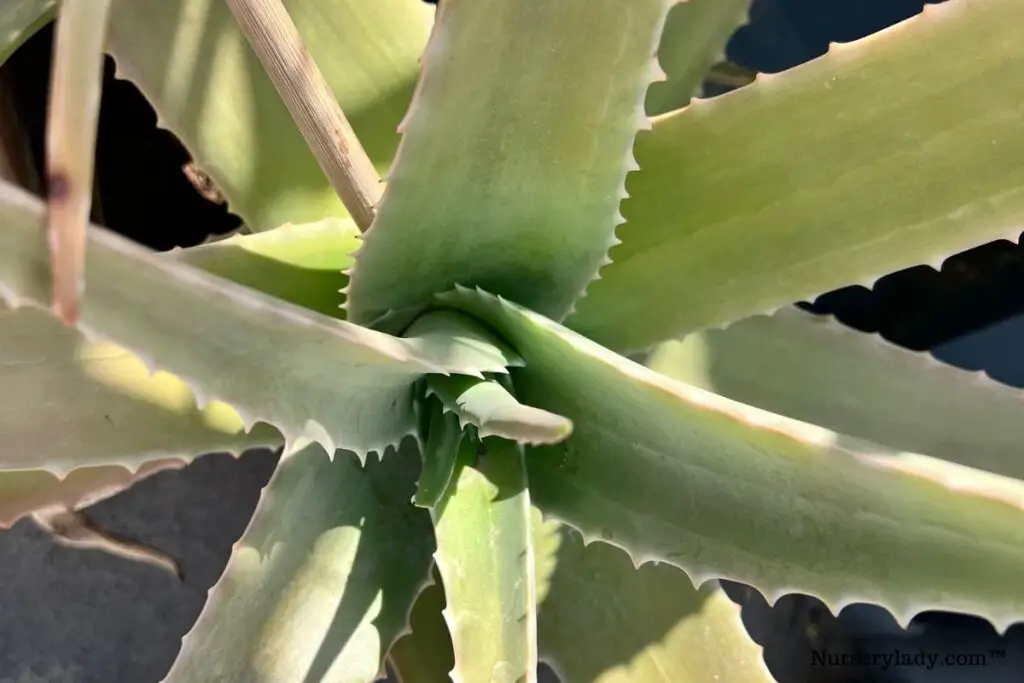
Why do Aloe Vera leaves fall off the plant?
Aloe Veras will fall off the plant if you don’t take proper care or did something wrong, to which the plant responded negatively.
There are various reasons behind aloe leaves falling off.
Below are some reasons:
Overwatering
The primary reason behind Aloe Vera’s leaves falling off is overwatering.
Since Aloes are native to dry areas, they don’t require frequent watering.
Instead, they love dry conditions.
Watering the plant too frequently keeps the soil around the roots damp for prolonged periods.
It weakens the roots, and the leaves become brown, mushy, droopy, and ultimately fall off.
Also read: How To Water Aloe Vera Plant? (How often, Summer, Winter)
Drainage
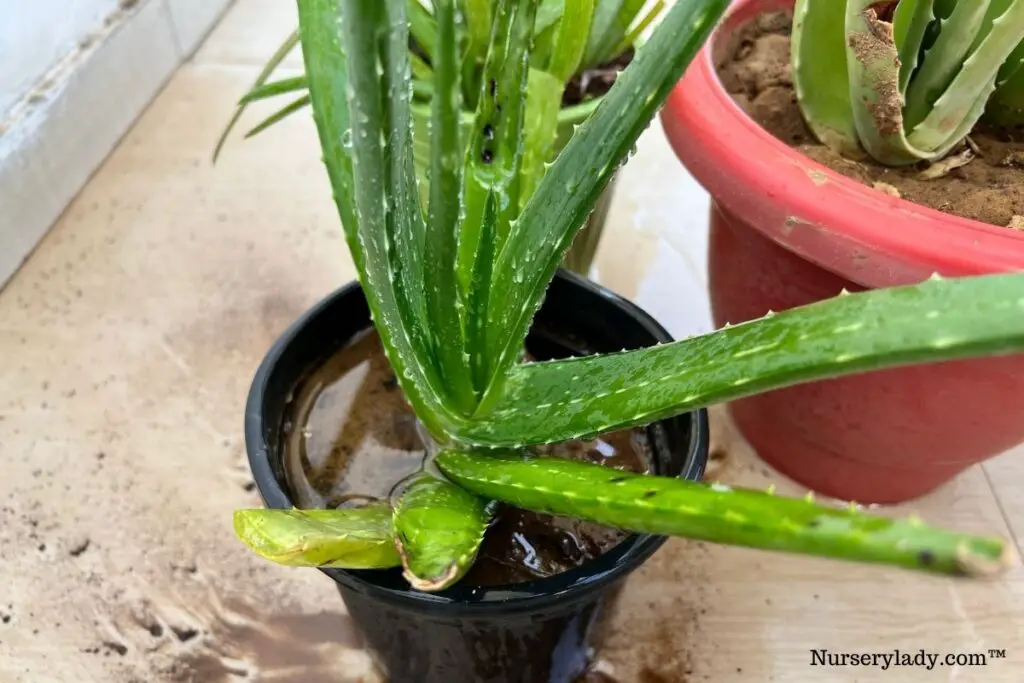
Poor drainage will also cause overwatering even if you correct the watering routine.
When the water doesn’t drain well, it stays stagnant around the roots, thus making the roots weak.
The plant becomes prone to leaf discoloration and defoliation.
This happens when the soil is ordinary and lacks porous ingredients which help in drainage.
It will also happen if the container doesn’t have any drainage holes.
Drainage is essential for Aloes as it helps to keep the plant dry.
Also read: What Type Of Soil For Aloe Vera Plant? (+Ideal Soil Mix)
Lack of sunlight
Since Aloes are desert plants, they grow seamlessly under full sun.
If they lack proper sunlight, it will affect in production of chlorophyll and photosynthesis.
The lack of sunlight will also delay the drying of the soil.
The leaves will become weak, discolored, and brittle.
The soil will remain damp for prolonged periods.
Due to this, the leaves will slowly begin to drop off.
Also read: What Kind Of Light For Aloe Vera Plants? (Full sun, Shade, Or Partial Light?)
Low temperature
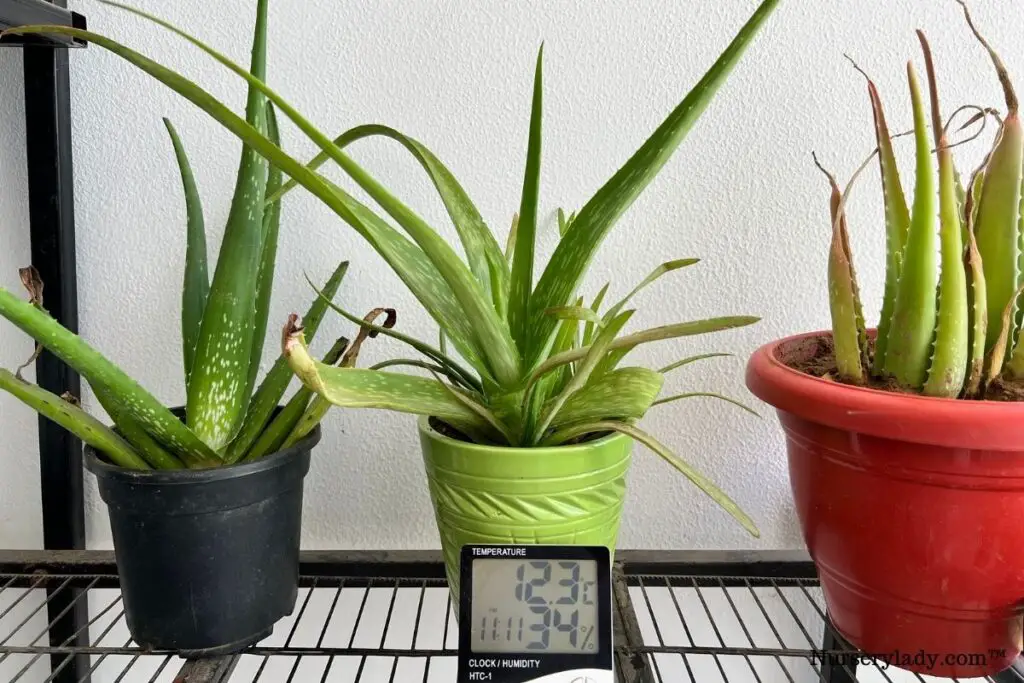
Aloes grow best when the temperature around them is warm and ranges between 55-75°F.
That is why they cannot tolerate cold temperatures.
When exposed to temperature below 50-55°F, the water inside the leaves will expand, freeze and burst, thus damaging the cells and tissues.
Due to the injury in cells and tissues, the leaves will lose their rigidity and fall off.
So, you must bring the outdoor Aloe Veras indoors to save them from the cold drafts.
Also read: Can Aloe Vera Plants Survive Cold Weather? (+Deal With Cold Damage)
Looking for gardening supplies? We have tested 100's of products before recommending them to you guys. Check out our best pick below:
| Image | Gardening Supplies | Best Price? |
|---|---|---|
 Top
Top Top
Top | Raised Garden Bed Kit | Check On Amazon |
 | XLUX Soil Moisture Meter, Plant Water Monitor, Soil Hygrometer Sensor for Gardening, Farming, Indoor and Outdoor Plants, No Batteries Required | No Results |
 Top
Top Top
Top | 82 Pcs Garden Tools Set and Extra Succulent Tools Set | Check On Amazon |
 | Joeys Garden Expandable Garden Hose with 8 Function Hose Nozzle, Lightweight Anti-Kink Flexible Garden Hoses, Extra Strength Fabric with Double Latex Core, (50 FT, Black) | No Results |
 Top
Top Top
Top | Dual Chamber Compost Tumbler | Check On Amazon |
 Top
Top Top
Top | Sunnyglade Plant Stakes | Check On Amazon |
 Top
Top Top
Top | Organic Cold Pressed Neem Seed Oil | Check On Amazon |
 Top
Top Top
Top | Mighty Mint Gallon :-Insect and Pest Control Peppermint Oil | Check On Amazon |
 Top
Top Top
Top | Scotts DiseaseEx Lawn Fungicide | Check On Amazon |
 Top
Top Top
Top | Jacks Classic 20-20-20 All Purpose Fertilizer | Check On Amazon |
 Top
Top Top
Top | 30,000 Seeds Pollinator Attracting Wildflower Mixture | Check On Amazon |
 Top
Top Top
Top | Survival Vegetable Seeds Garden Kit-Over 16,000 Seeds | Check On Amazon |
Frequent repotting
Sometimes, gardeners repot the Aloes too frequently because of their fast-growing features.
But, in general, the Aloes should be repotted only once every 1-2 years.
If you repot them at the time while they are still struggling to get adjusted to the new environment, it will make the plant stressed out.
Due to the stress, the leaves start to drop off.
If you must repot the plant, you should first watch for the signs of root-bound.
Unless and until the plant shows root-bound, overgrown or overcrowded signs, you should not repot them so often.
Also read: How To Repot An Aloe Vera Plant? (Step-by-Step Guide)
Chemical shock
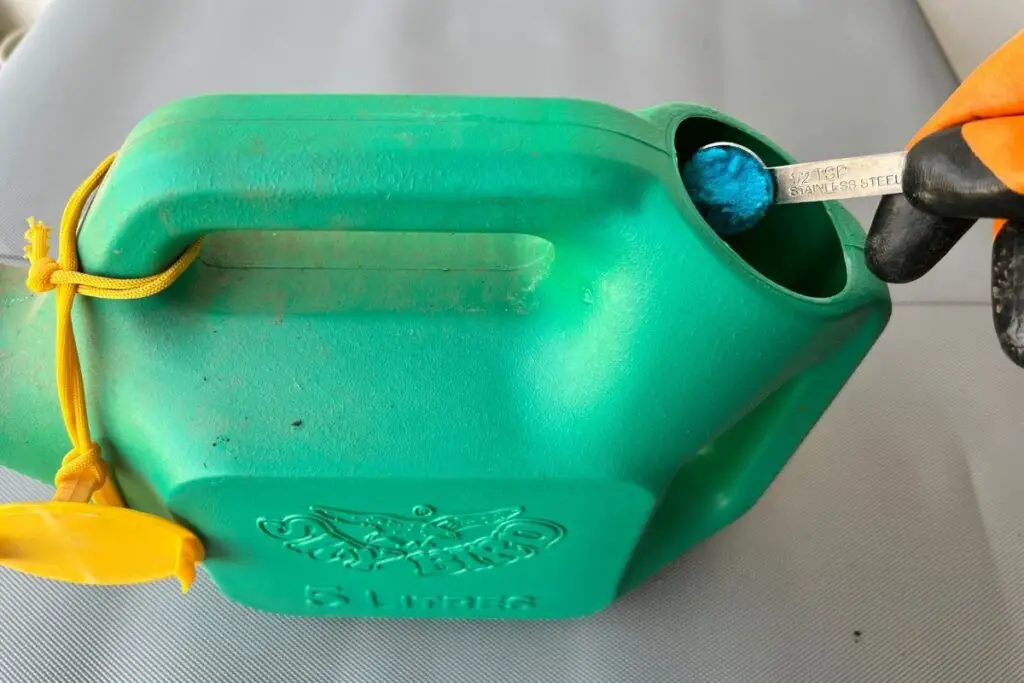
It occurs when you try to fix some issues with chemical products, like pesticides, fertilizers, or fungicides.
It is tempting to use too much in the thought that the problem will get quickly fixed or the plant will grow faster.
But that is not the case in reality.
Overuse of these chemical products shocks the whole plant system, thus resulting in losing healthy leaves.
Because of this, it is always better to read the instructions carefully and always use them in fewer amounts.
Less is more.
Also read: Does Aloe Vera Need Fertilizer? (How Much, How Often+Best Pick)
Natural cycle
Over time, when the old leaves of the Aloes have completed serving their purpose, they will fall off the plant naturally and grow new leaves.
This is natural, and there is no solution to it.
Diseases
Fungal and bacterial diseases like Aloe Rust, Base rot disease, or Bacterial Soft Rot can also lead to defoliation.
It occurs when the plant remains wet and cold for prolonged periods.
Since these situations are ideal for these fungi and bacteria, they would love to stay in your plant and slowly kill them.
Also read: Why Is My Aloe Vera Plant Getting Black Spots? (Causes+How To Fix)
Why should we trim Aloe Vera leaves?
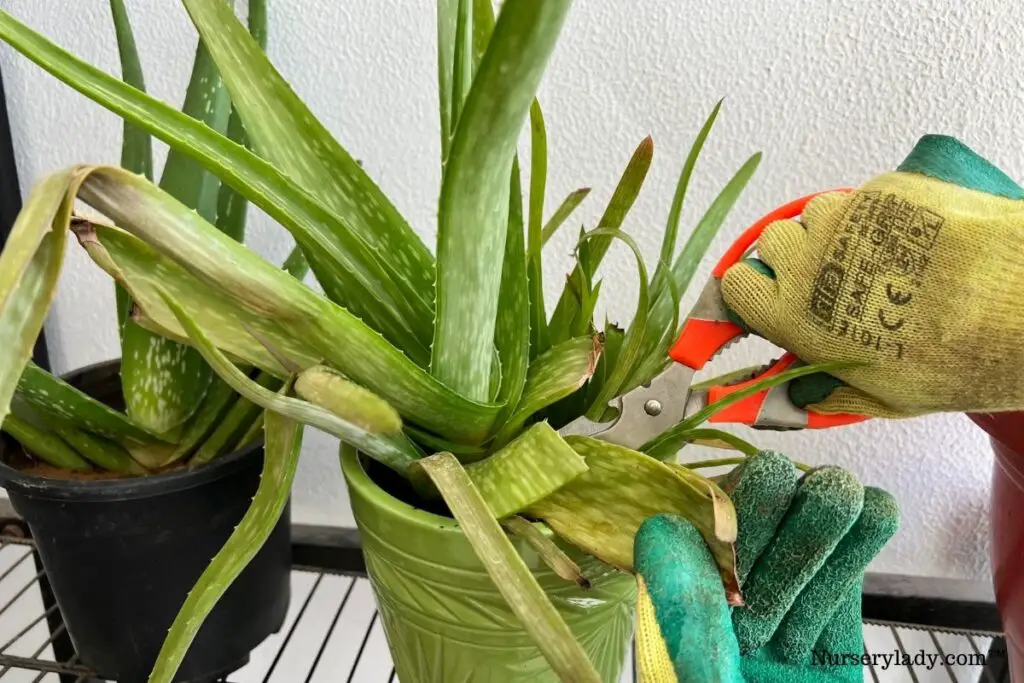
Generally, we trim Aloe Vera to extract the gel, keep an oversized plant in shape and propagate.
For pruning the Aloe Vera, you should always select the outer leaves.
First, you must select a mature and healthy leaf.
It helps in successful propagation and getting lots of gel.
Additionally, removing the older leaves will encourage the further growth of new leaves.
Trim the discolored, dried, dead leaves after removing the mature, healthy leaves.
It helps the plant breathe and concentrate more on growing new leaves than reviving the dead ones.
The cut should be made close to the stem but not too close.
Otherwise, it will hinder the growth process of the plant.
Also read: How To Trim Aloe Vera Plant? (Step-by-Step Guide)
Breaking of Aloe Vera leaves
You should never deliberately cut or break the leaves from the middle or tip, as this won’t support any new leaf growth in the plant.
Sometimes, the leaves break from the tip or middle by accidental bumping.
It also occurs due to the curiosity of the children and pets.
So, you need to be careful about it and keep it at a location with no chances of accidents or loitering of pets and children.
Sometimes, the Aloe Veras will break due to negligence. Below are the reasons:
Overwatering can weaken the strength of the leaves, attract fungi and cause them to break.
Water sparingly and add some fungicide to counteract the fungus.
Low temperatures can be a problem. Maintain an average temperature between 55-75°F.
Lack of light can make the leaves brittle and prone to breaking.
Don’t frequently repot as that can shock the plant’s system and break the leaves.
Repot at least once every 1-2 weeks.
Will Aloe Vera leaves grow back?
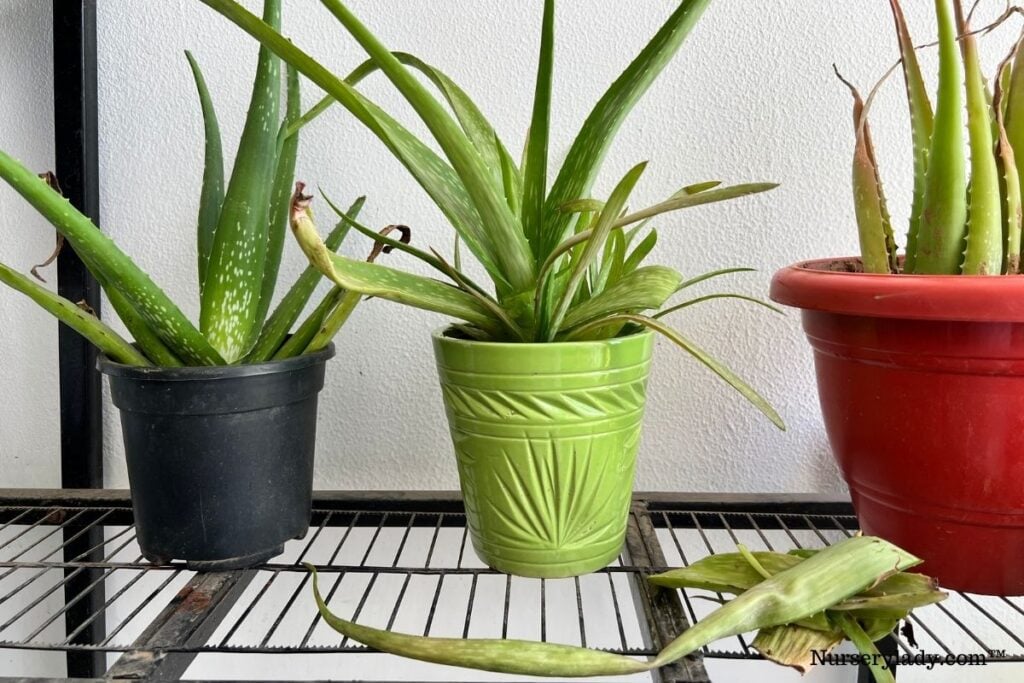
If the leaves are falling off the plant due to some issues, you must first solve the problem behind falling leaves to encourage the growth of new leaves.
Only then are there chances of growing back new leaves.
If you cut the leaves for propagation or extraction of the gel, there are 50-50 chances of growing new leaves.
It generally depends on where you cut.
The new leaves will not grow back from where they fell or were pruned.
New leaves will grow from the center of the leaves.
The vacant space will get filled up only when the plant produces new pups.
Your Aloe Vera leaves won’t regenerate if they are broken or cut from the tip or middle.
Since they are trimmed from the middle, they have no purpose and won’t need any support or sustenance.
Thus, that leaf will seal off its opening.
After a few days, that leaf will turn brown.
But don’t panic because it won’t create any issues or contain the plant from thriving.
In maximum situations, new stalks grow and replace the leaves broken or trimmed from the middle or at the tips.
How long will the Aloe Vera take to grow new leaves?
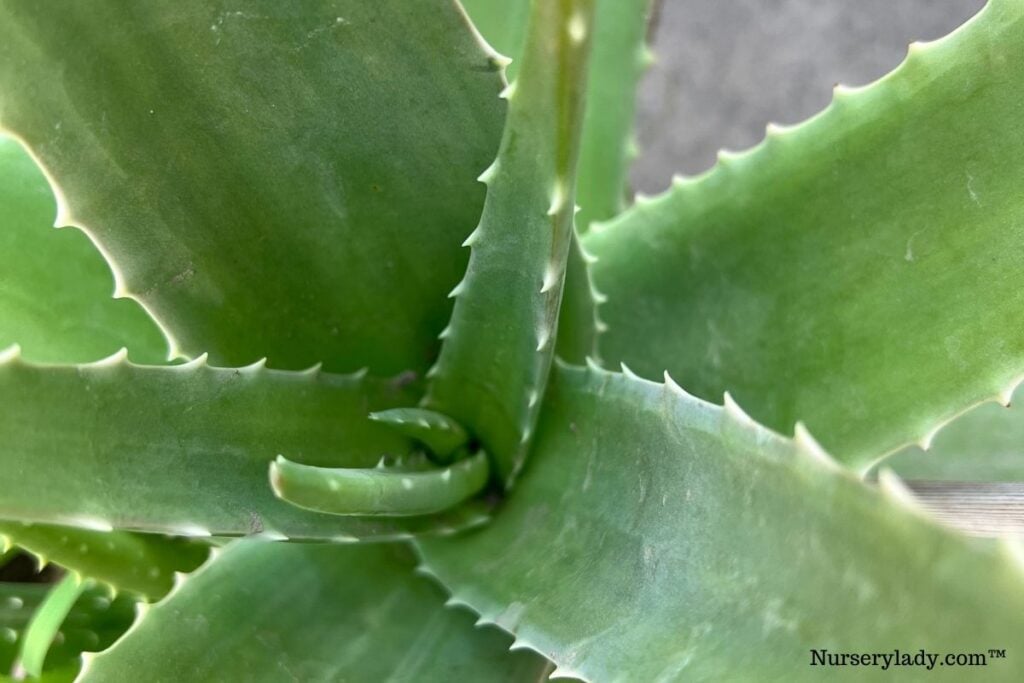
If an aloe leaf is cut, it will generally take 5 months to grow back.
But, for that, you must cut off the mature leaves.
If you trim off the young leaves that are yet to mature, those leaves will take more than 5-6 months to regrow.
However, it is a matter of patience. You must wait patiently to witness new growth.
To encourage faster growth, you can follow some tricks discussed in the next section.
How to encourage the Aloe Veras to regrow faster?
Here are some effective tricks to encourage the Aloe Vera leaves for faster growth:
Water enough during the growing months
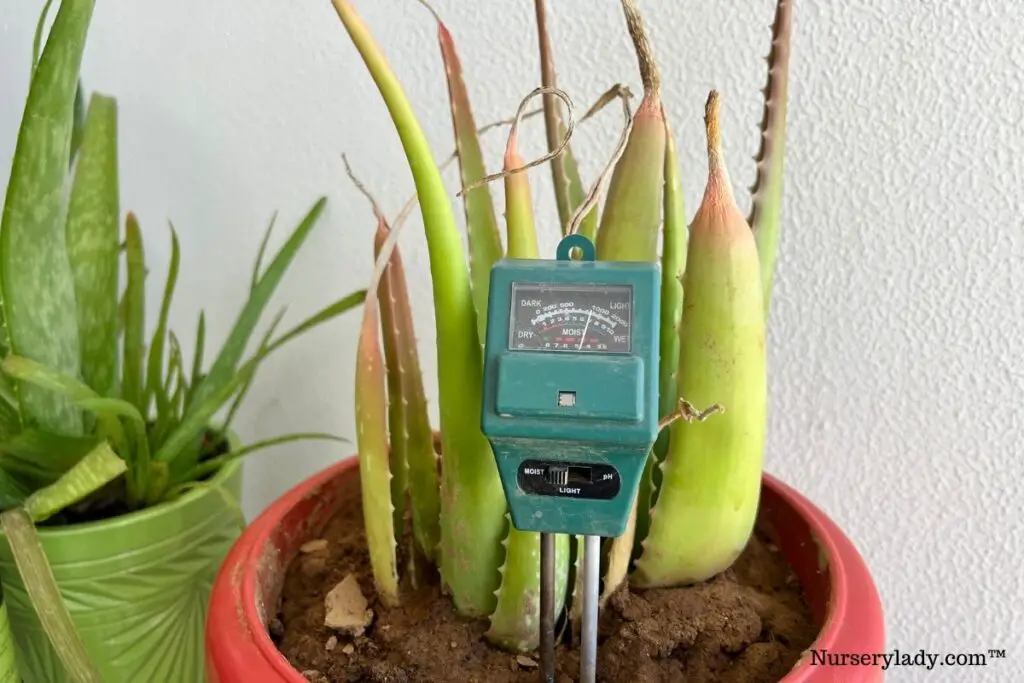
The growing months of Aloe Vera are spring and summer.
Water them once every 2-3 weeks during the spring.
Since the weather gets extremely dry in the summers, water them once every 1-2 weeks.
The best way to water is to check the soil and wait until the top 2-3 inches of the soil gets dry.
However, you might not need to provide them with so much water if the temperature rises above 80-90°F.
The plant will go dormant under such conditions.
So, skip watering for some weeks and only water them when 3/4th of the soil around the roots is dry.
Use the right container.
If you want your Aloe Vera leaves to regrow, you must use a container with drainage holes.
The pot must have enough holes to drain out the excess water.
The pot should also have enough space for the roots to spread properly.
This will increase the plant’s capacity to produce new leaves faster.
Use a container depending on the size of the plant.
It should be at least 1/3rd bigger than the plant’s root system.
A small one will restrict the root growth, whereas a large one will cause overwatering.
These problems can reduce the plant’s capability to produce new leaves and their growth speed.
Also read: What Pot Is Best For Aloe Vera Plant? (Pot Type, Size & More)
Maintain an ideal temperature
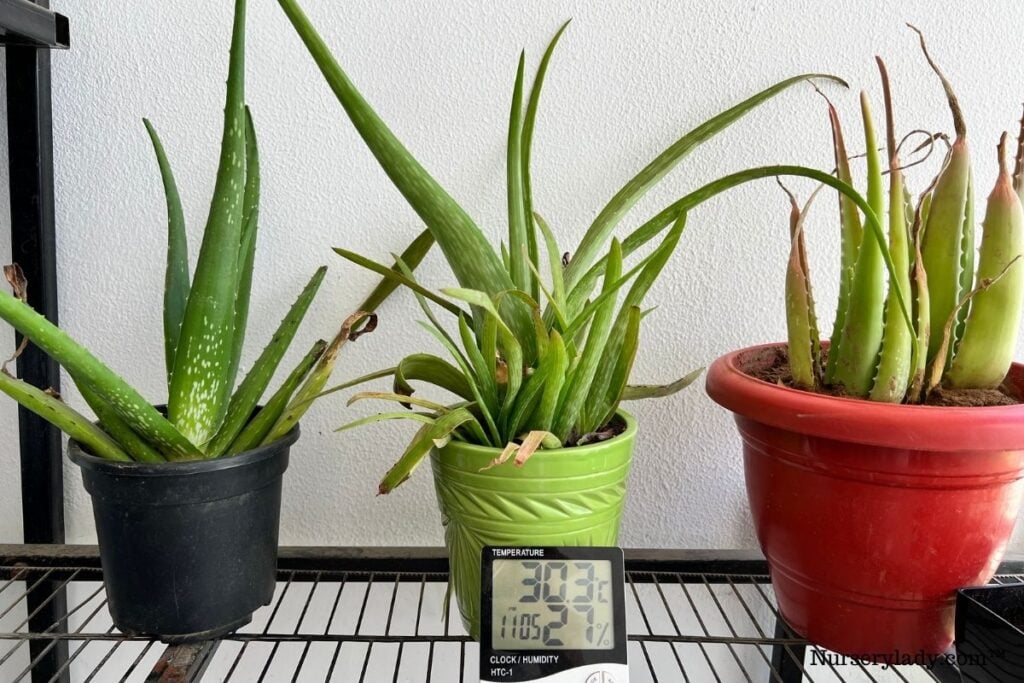
Aloes belong to dry and warm areas where the temperature stays within 55-75°F.
This temperature is best for the plants to regrow new leaves.
Since they are hardy plants, they can endure poor weather and grow new leaves within 4-5 months.
Though these plants can endure bad weather, they cannot tolerate extremely high or low temperatures.
Excessive high temperatures can make them dormant, and too low temperatures can result in freeze damage.
So, you must take special care of them in such weather and make sure they stay safe.
Also read: Aloe Vera Temperature Tolerance: Ideal Temperature+Keeping Them Safe
Ensure proper lighting
To help the Aloes grow new leaves faster, you should give them enough sunlight.
Being desert plants, Aloe Veras will enjoy lots of sunlight.
But, it should not be too harsh as that can result in sunburns.
Plant the Aloe Veras in a sunny spot.
If they are getting harsh sunlight, fix transparent shading nets.
If they are in containers, shift them to a partially shady spot.
Keep the indoor Aloes near the north or east-facing window during the summers.
This direction will give them enough less intense sunlight and reduce the risk of sunburns.
Since the level of sunlight and daylight hours are lower in winters, keep them near a south or west-facing window.
You can also use artificial lights if they are not getting sufficient sunlight.
Never deprive them of light.
Use the best potting soil for Aloes
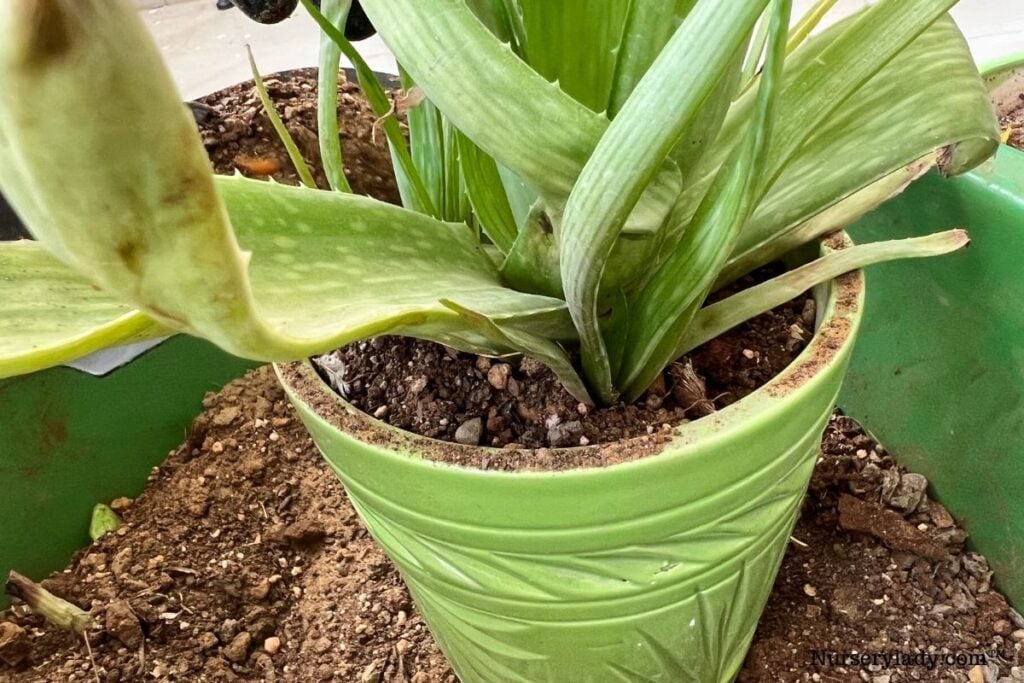
Aloe Veras originate from the sandy desert regions.
Therefore, sandy or gritty soil is perfect for them.
Sandy soil helps a lot in drainage.
It would help them to remain dry most of the time.
Also, add some garden soil and perlite as, besides improving drainage, it will retain moisture for a short time.
Add banana peels
Banana peel is a great source of phosphorus, potassium, magnesium, iron, and calcium.
These nutrients are essential for the plant’s survival.
Adding some peels or banana peel tea to the soil can greatly encourage the growth of the Aloe Veras.
Cut the peels into pieces and mix them with the soil.
Or, you can make a tea out of it.
In most cases, banana peel tea works quite effectively in increasing leaf growth, height, and faster maturity.
Take a pitcher.
Fill 3/4th of it with water and keep it in the fridge.
Fill the pitcher with all the discarded banana peels for about 7 to 10 days.
After that, strain the liquid.
Dilute one part of this strained fluid with 5 parts of water and pour it into the soil.
But remember that it doesn’t have any nitrogen.
So, you have to provide them with nitrogen separately.
Low-nitrogen fertilizer
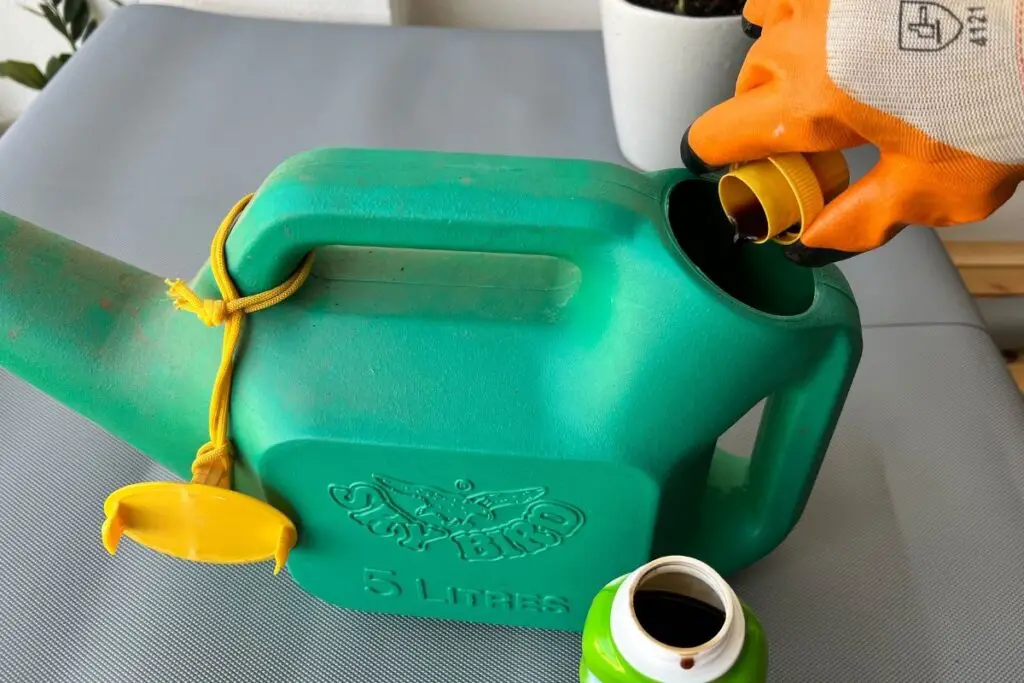
Since making banana peel tea takes time and effort, you can use low-nitrogen fertilizers to increase the plant’s growth.
Remember that Aloe Veras are not heavy feeders.
They are acquainted with growing in poor soil.
So, when you are applying this fertilizer, use it in fewer amounts and frequency and read the instructions carefully.
Use it only during the growing months, once every few months or year.
Final thoughts
There is no guarantee whether your Aloe Vera plant will grow leaves. But if you take proper care and follow the tricks shared earlier, your plant will grow new leaves.
Note that the place from the leaf fell or cut will not get replaced with new leaves.
Those areas will remain empty and only get filled by pups. However, if new leaves are to grow, they will grow from the center of the leaves.
Take proper care of the plant to prevent defoliation and breaking. Take immediate steps to stop the problem.
For cutting the leaves, always cut close to the stem and not from the tip or middle. Always choose the healthy and mature leaves and not the young ones.
Keep your Aloe Vera at a location where pets or children won’t loiter. It also ensures low chances of accidental bumping and prevents breaking.
Reference: NCBI, New York Botanical Garden, University of New Hampshire, University of Florida, Wikipedia.

Your article helped me a lot, is there any more related content? Thanks!